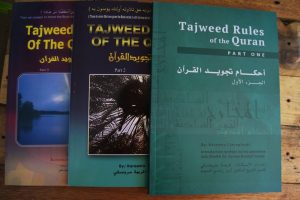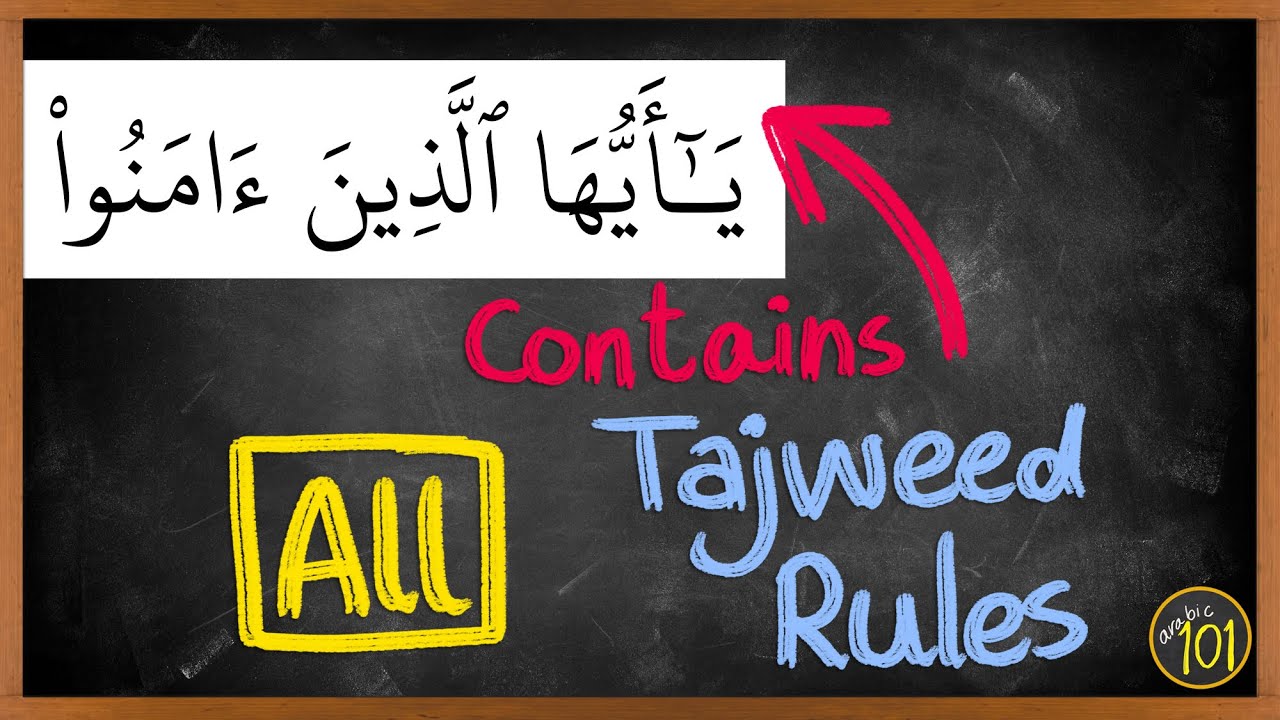Tajweed Of Quran
Table of Contents
ToggleTajweed Rules are the set of guidelines and rules that govern the proper pronunciation and recitation of the Quran. It ensures that the Quranic text is recited with the correct articulation, intonation, and emphasis, preserving the original Arabic phonetics and preserving the intended meaning. Tajweed is a crucial aspect of Quranic recitation, as it helps maintain the integrity and authenticity of the holy scripture. By following the Tajweed Rules, Muslims can recite the Quran with reverence, precision, and respect for the divine text.
What Is Tajweed?
Tajweed Rules are the proper recitation of the Quran, following a set of rules and principles to ensure the correct pronunciation and articulation of the Arabic text. Tajweed is derived from the Arabic word “Jawwada,” meaning “to make good” or “to improve.”
Tajweed Meaning?
In the context of Quranic recitation, Tajweed Rules refer to the science of reciting the Quran with the correct pronunciation, articulation, and intonation. It involves applying a set of rules and guidelines that govern the recitation of the Quranic text, ensuring that each letter is pronounced with its proper characteristics, such as length, stress, and oral emphasis.
The Tajweed Meaning encompasses the principles and techniques that enable Muslims to recite the Quran with utmost precision and reverence. By adhering to the Tajweed rules, reciters can preserve the original Arabic phonetics and maintain the intended meaning of the divine text, ensuring that the Quran is recited in a manner that honors its sacred status.
At its core, Tajweed is a set of guidelines that help reciters of the Quran to pronounce each letter and word with its inherent qualities, such as length, stress, and articulation points. By adhering to these Tajweed Meaning Rules, reciters can ensure that the Quran is delivered with the utmost reverence and respect, as befitting the word of God.
The practice of Tajweed is not only a matter of proper recitation but also a means of honoring and preserving the divine text. By mastering the Tajweed Meaning and its associated principles, Muslims can deepen their connection to the Quran and enhance their spiritual journey.
How Long Does It Take to Learn Tajweed?
The time it takes to learn Tajweed can vary greatly depending on several factors, such as your prior knowledge, learning style, and the time and dedication you commit to the process. Generally, it can take several months to a few years to gain proficiency in Tajweed, depending on your level of commitment and the intensity of your study.
Learning how to learn Tajweed can be a rewarding and transformative experience for Muslims, as it allows them to deepen their understanding and appreciation of the Quran. Remember, learning how to learn Tajweed is a journey, and with patience, dedication, and the right guidance, you can develop a deep appreciation for the beauty and precision of Quranic recitation. However, here are some general guidelines on the timeline for learning Tajweed:
| Learning Approach | Estimated Timeline |
|---|---|
| Self-study with online resources | 1 to 2 years |
| Weekly in-person lessons with a Tajweed instructor | 6 months to 1 year |
| Intensive Tajweed Course (2_4 hours per week) | 3 to 6 months |
It’s important to note that the actual time it takes to master how long to learn Tajweed will depend on your dedication, consistency, and the quality of your instruction. Some individuals may progress faster than others, and the timeline can also be influenced by the complexity of the Tajweed Rules and the difficulty of the Quranic passages you’re studying.
Regardless of the approach you choose, it’s crucial to be patient and persistent in your Tajweed learning journey. With consistent practice and guidance from qualified instructors, you can develop the skills necessary to recite the Quran with precision and reverence.
Start learning Quran, Arabic and Islamic Studies from the comfort of your Home with the Best Online Quran School.
Learn Quran, Arabic & Islamic Online
How To Learn Tajweed of Quran?
Learning Tajweed online at Mishkah Academy is a convenient and accessible way to improve your recitation of the Quran. The academy offers a comprehensive Tajweed course that covers the rules and principles of proper Quranic recitation. By enrolling in this course, students can enhance their understanding of Tajweed and improve their recitation skills from the comfort of their own home.
The first step to learning Tajweed online at Mishkah Academy is to enroll in the course. The academy offers a user-friendly platform that allows students to easily sign up and access the course materials. Once enrolled, students will have access to a variety of resources, including video lectures, interactive exercises, and practice sessions. These materials are designed to help students learn and apply the rules of Tajweed in a structured and engaging way.
One of the benefits of learning Tajweed online at Mishkah Academy is the opportunity for personalized feedback and guidance. The academy offers one-on-one sessions with experienced instructors who can provide individualized support and assistance. These sessions allow students to receive feedback on their recitation and address any specific areas of difficulty. By receiving personalized guidance from knowledgeable instructors, students can accelerate their learning and make significant progress in their Tajweed studies.
In conclusion, learning Tajweed online at Mishkah Academy is a convenient and effective way to improve your recitation of the Quran. By enrolling in the academy’s comprehensive Tajweed course, students can access high-quality resources, receive personalized feedback, and make steady progress in their studies. By dedicating time each day to studying and practicing Tajweed, students can enhance their recitation skills and deepen their understanding of the rules of proper Quranic recitation. Overall, Mishkah Academy provides an excellent platform for learning Tajweed online and improving one’s relationship with the Quran.
Join Best Online Tajweed Classes!
For those interested in joining Tajweed Rules Course Online, there are numerous online resources available that can help you achieve your goals. One such platform is Mishkah Academy, which offers comprehensive Tajweed Rules Course Online taught by experienced and qualified instructors.
Mishkah Academy’s Tajweed Rules Course Online provides a structured and engaging learning experience, allowing students to master the principles of Tajweed at their own pace. The courses cover a wide range of topics, including proper articulation, rules of recitation, and the application of Tajweed in the daily recitation of the Quran.
In addition to the Online Tajweed Classes, Mishkah Academy also offers interactive sessions, where students can receive personalized feedback and guidance from their instructors. This interactive approach ensures that students not only gain a theoretical understanding of Tajweed but also develop the practical skills necessary to apply it in their recitation.
Whether you’re a beginner or an experienced Quranic reciter, Mishkah Academy’s Tajweed classes online are designed to cater to your specific needs. With a commitment to excellence and a focus on providing high-quality education, Mishkah Academy is the perfect choice for those seeking to enhance their Tajweed skills and deepen their connection with the Quran.

Importance Of Tajweed Quran?
Reciting the Quran with Tajweed, the art of proper pronunciation and intonation, brings about a multitude of benefits and virtues that can enrich the lives of believers. From a heightened spiritual connection with Allah (SWT) to a deeper understanding of the divine message, the rewards of reciting the Quran with Tajweed are truly transformative.
One of the primary spiritual benefits of Quran recitation with Tajweed is the profound sense of closeness to the Almighty. By focusing on the correct pronunciation and articulation of each word, believers can immerse themselves in the Quranic verses, allowing the divine words to resonate deeply within their hearts and souls. This enhanced connection with the Quran can lead to a greater sense of peace, tranquility, and inner fulfillment, as the believer’s relationship with Allah (SWT) is strengthened.
Moreover, reciting the Quran with Tajweed can foster a more profound comprehension of the divine message. When the Quran is recited with precise articulation and proper intonation, the meaning and nuances of the verses become more accessible and meaningful to the listener. This deeper understanding can inspire believers to implement the Quranic teachings in their daily lives, leading to spiritual growth and transformation.
In addition to the spiritual benefits, reciting the Quran with Tajweed also carries immense rewards in the Hereafter. The Prophet Muhammad (peace be upon him) emphasized the importance of reciting the Quran correctly and promised numerous blessings for those who make the effort to master the art of Quranic recitation. These rewards can include increased status in the eyes of Allah (SWT), intercession on the Day of Judgment, and the ability to intercede for one’s family and loved ones.
| Benefits of Reciting Quran with Tajweed | Virtues of Reciting Quran with Tajweed | Rewards of Reciting Quran with Tajweed |
|---|---|---|
| Enhanced spiritual connection with Allah (SWT) | Preserving the authenticity and purity of the Quran | Increased status in the eyes of Allah (SWT) |
| Deeper understanding of the divine message | Honoring the sanctity of the Quran | Intercession on the Day of Judgment |
| Cultivation of inner peace and tranquility | Developing a stronger relationship with the Quran | Ability to intercede for one’s family and loved ones |
In conclusion, reciting the Quran with Tajweed is a profound spiritual practice that brings about immense blessings and virtues for the believer. From enhancing one’s connection with Allah (SWT) to cultivating a deeper understanding of the Quranic teachings, this art of Quranic recitation is a testament to the beauty and significance of the Quran in the lives of Muslims.
How to recite Quran with Tajweed Rules?
Reciting the Quran with proper Tajweed is a fundamental aspect of Islamic practice, as it ensures the correct pronunciation and articulation of the divine text. Here are some key steps to help you recite the Quran with Tajweed:
Start by mastering the basic Tajweed Rules, such as the proper pronunciation of letters, vowels, and diacritical marks. Familiarize yourself with the principles of Tajweed, including the rules of Madd (lengthening), Ghunnah (nasalization), and Ikhfa (hidden sound). Understand the importance of maintaining the correct Makhraj (point of articulation) and Sifat (characteristics) of each letter.
Practice reciting the Quran slowly and deliberately, paying close attention to the Tajweed rules. Utilize resources such as audio recordings, online tutorials, and guidance from qualified Tajweed instructors to ensure you are reciting the Quran with the utmost precision. Regularly review and apply the Tajweed principles you have learned, as consistent practice is key to perfecting your recitation.
Embrace the spiritual aspect of Quranic recitation and approach it with humility, reverence, and a sincere desire to please Allah (SWT). Reciting the Quran with Tajweed is not just about the technicalities of pronunciation; it is a means of connecting with the divine message and deepening your faith. Allow the Quran to touch your heart and soul as you recite it with Tajweed.
Basic Tajweed Rules Lessons
Lessons 1: Tanween and Noon Sakinah
One of the main topics that form a large part of Tajweed is the rules of Noon Sakeen and Tanween. Let’s first start with their meaning and then learn the Tajweed rules with examples of all their types.
Tanween: It is called nunation when Tanween gives the sound of “an” at the end of the word with fatha, “un” at the end of the word with damma, and “in” at the end of the word with kasra.
Example:
As for Noon Sakeen: It is called Noon with Jazm without movement (Harakah). Tanween and Noon Sakeen are read in one of the forms Ikhfaa, Izhaar, Idgham, and Iqlaab according to the letters that follow them.
1- Izhaar (making clear)
If one of the 6 letters with throat letters (Huruf Halqiyyah) comes after Tanween or Noon Sakeen, it is called tanween or noon Sakeen to be read clearly without idgham, Iqlab and Ikhfaa. The Huruf Halqiyyah are: khaa’ (خ), ghayn (غ), haa’ (ح), ayn (ع), haa (هـ), and hamzah (ء). Example:
2- Idghaam (merging)
It means joining a non-vowel with a vowel so that the two letters become one letter of the second type. As for the meaning of Ghunnah, it is the sound coming from the mouth and nasal cavities for 2 beats.
A) Idgham Bila (without) Ghunnah
If the Quranic letters Lam or Ra come after tanween or sakeen noon, idgham without ghunnah occurs. Examples for Idgham without Ghunnah:
b) Idgham Ma’al (with) Ghunnah :
It occurs when one of the letters with Ghunnah (ي – ن – م – و) comes after Tanween or noon Sakeen (in separate words). Example of Idgham with Ghunnah:
3- Iqlaab (converting)
When the letter ba comes after tanween or sakeen noon, it is called turning tanween or noon into a meem letter whilst adding Ghunnah of 2 beats. Example:
4- Ikhfaa (hiding)
If one of the letters of Ikhfaa comes after tanween or noon Sakeen, the Ikhfaa rule appears. It is called not speaking the noon sakeen openly, but hiding or adding a blurry Noon sound with Ghunnah.
Letters of Ikhfaa’ are (ت، ث، ج، د، ذ، ز، س، ش، ص، ض، ط، ظ، ف، ق، ك). or we can simply say: any letter other than the letters of Izhaar, Iqlaab or Idghaam. Example:
Lessons 2: Rules of Meem Sakinah
Now the rules of noon Sakinah and Tanween are clear. But what are the Meem sakeen rules? Let’s take a look!
1- Ikhfaa Shafawy
It happens when a letter ba with movement comes after meem sakeen. Example:
2- Idghaam Mutamathelyne Sagheer
If a meem with movement (fatha, damma, or kasra) comes after a meem with no Harakah, this rule occurs. Examples:
3- Izhaar Shafawy
It occurs when any letters other than Meem and Baa come after the meem with no Harakah. Example:
Lessons 3: Al Madd
Another basic tajweed rule that should definitely be known is the Madd. The letters of Madd are letters without movement (Harakah) ى و ا. Madd letters allow the letters in front of them to be read by being stretched for a duration of different amounts such as two, four, or six beats.
1- Two Beat Madd
Two-beat Madd is also called natural Madd. In other words, the Madd (elongation) feature is due to the letter itself. It is not based on any subsequent reason such as hamza or Sukoon and its duration is two beats.
Examples: When a letter with fatha comes before “alif” ( ا ) without a vowel, the letter before is read stretched:
2- Two, Four or Six Beat Madd (the flexible)
If one is to stop on a word and there is Madd before the last letter, then one may pause by extending for four beats or 6 beats with a minimum duration of two beats. Example:
3- Four Beat Madd
If Madd is in the middle of a word and is followed by hamza, it should be prolonged to four beats. Example:
Another similar four-beat prolongation case is if a word ends with Madd and the other word starts with hamza, the madd letter is also prolonged in the same way. Example:
4- Six Beat Madd
If a Madd letter is followed by a Shaddah letter, the Madd letter should be prolonged to 6 beats. Example:
Lessons 4: Qalqalah
Qalqalah in tajweed means echoing the Makhraj so that a strong sound is heard. If one of the Qalqalah letters is found without Harakah in the middle of the word, a quick echo should be given. Also, when the Qalqalah letter is at the end of the word, Qalqalah should be pronounced a bit stronger.
What are the Qalqalah letters? Well, they can be collected in the words (قُطْبُ جَدٍ), or (ق – ط – ب – ج – د) With this coding, it will be easier for you to remember the letters of Qalqalah.
Lessons 5: Noon and Meem Mushaddad
If one of the letters noon or meem has a Shaddah sign, two-beat Ghunnah is applied during the recitation. One point should be noted that even if a pause is made on that letter, two-beat Ghunnah is still pronounced.
FAQ
What is the meaning of Tajweed?
The term “Tajweed” comes from the Arabic root word “Jawwada,” which means “to make good” or “to improve.” In the context of Quranic recitation, Tajweed refers to the rules and principles that govern the proper pronunciation and articulation of the Arabic text.
How to learn Tajweed quran?
Learning Tajweed can be a rewarding and transformative experience for Muslims. Some steps to help you learn Tajweed effectively include: studying with a qualified Tajweed teacher, using Tajweed resources and textbooks, practicing regularly, and attending Tajweed classes, either in-person or online.
Where can I find the best Tajweed classes online?
There are numerous online Tajweed classes and resources available, such as those offered by Mishkah Academy. These platforms provide comprehensive Tajweed courses taught by experienced and qualified instructors, making it easier for individuals to learn Tajweed at their own pace and convenience.
How to recite Quran with Tajweed?
Reciting the Quran with proper Tajweed is a fundamental aspect of Islamic practice. Key steps to help you recite the Quran with Tajweed include: understanding the basic Tajweed rules, practicing the correct pronunciation and articulation of the Arabic letters, learning how to apply Tajweed principles, and continuously refining your recitation through regular practice and guidance from a qualified Tajweed teacher.



























